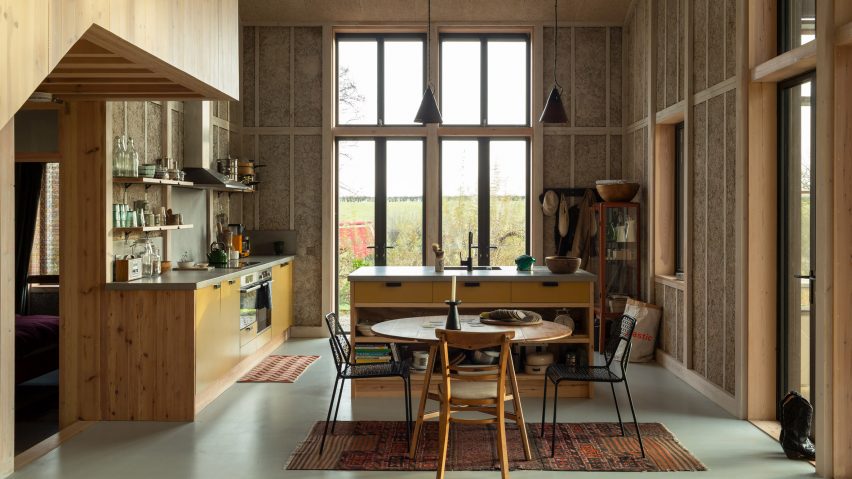
Ten tactile interiors that make use of natural biomaterials
In our latest lookbook, we take a look at 10 earthy interiors from the Dezeen archive that are fitted out with biomaterials such as cork, hemp and mycelium.
Biomaterials or biobased materials are made from biodegradable living matter. Other examples include wood, paper and bioplastics made from plants such as algae.
They are increasingly being used to help create earthy, natural-looking interiors, but they also offer a number of healthy and environmental benefits including natural cooling, breathability and carbon storage.
Interest in biobased materials is booming, according to Arup research Jan Wurm, who told Dezeen that architects and designers looking to reduce the carbon footprint of their projects are increasingly specifying the products.
This is the latest roundup in our Dezeen Lookbooks series providing visual inspiration for interiors. Previous articles feature loft conversions, L-shaped kitchens and Scandi living rooms.
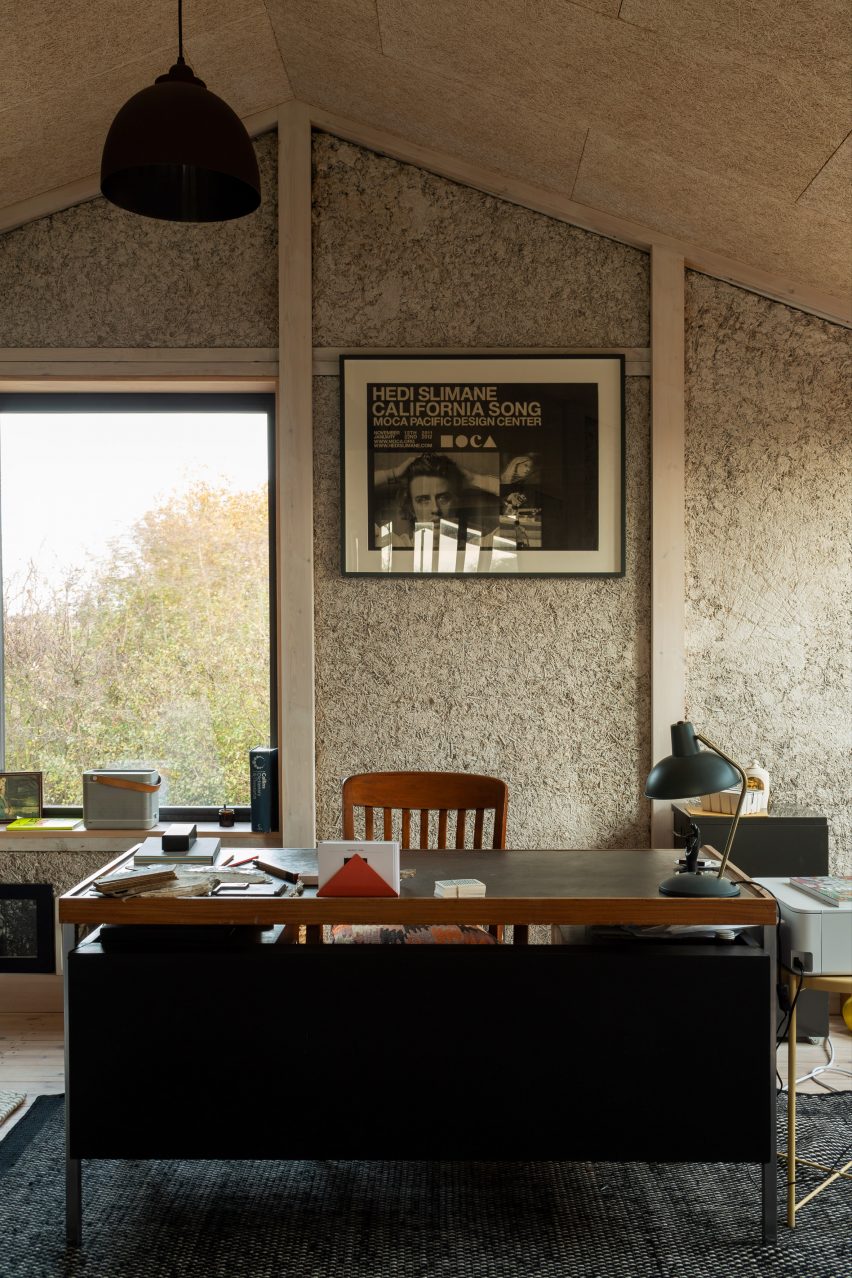
Hemp
The walls of the off-grid Flat House by Practice Architecture are made from large panels of hempcrete – a combination of lime binder and hemp.
Hemp is a fast-growing strain of the cannabis plant, often used as an eco-friendly building material as it is able to sequester carbon. For this project, it was grown at Margent Farm in Cambridgeshire, England and used to ensure the house has low embodied carbon.
The panels have been left exposed throughout the interior to offer a warm and tactile interior finish, which is complemented by timber elements.
Find out more about Flat House ›

Cork
Cork is a renewable, resistant and insulating material that is harvested from the bark of the cork oak tree. In architecture, it is typically used in the form of solid blocks made by heating and combining cork granules, such as in Cork House by Matthew Barnett Howland with Dido Milne and Oliver Wilton.
In this project, the blocks are left uncovered throughout the building's interior for a textured, natural look. This also ensures the structure is recyclable after the dwelling's useful life.
According to the architects, using cork also means the house has negative embodied carbon, as it absorbed more carbon dioxide than it emitted during construction.
Find out more about Cork House ›
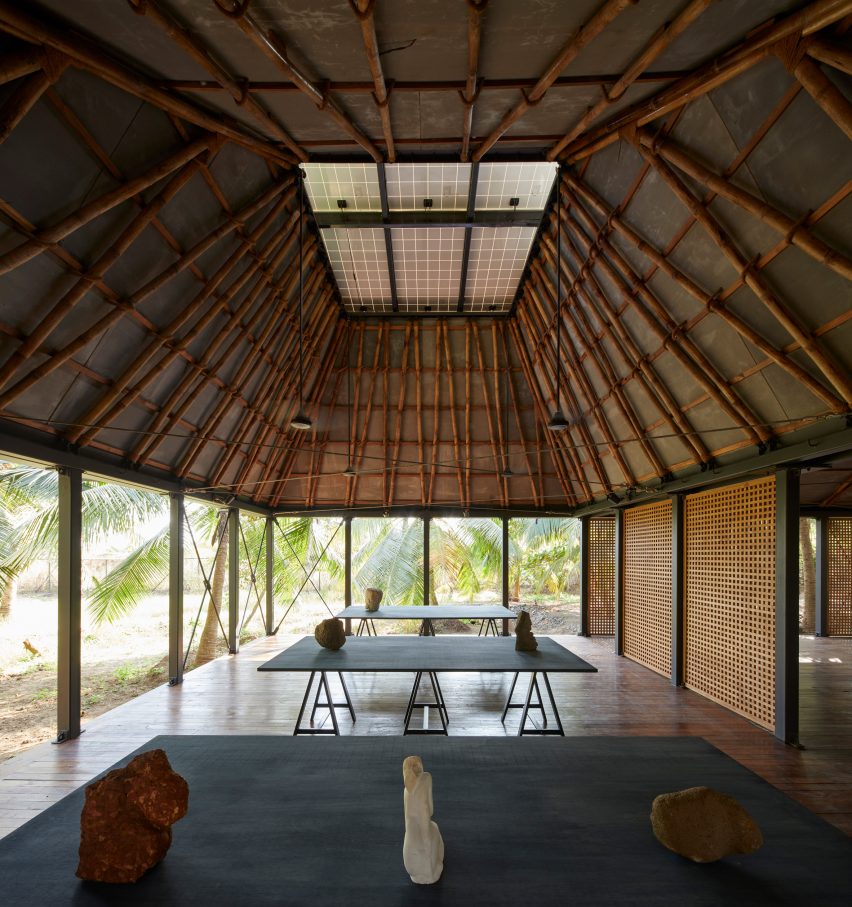
Bamboo
Bamboo is a fast-growing grass described by architect Simón Vélez as "vegetable steel" due to its strength and flexibility.
Architecture studio Brio used the material to support the roof of the Mumbai Artist Retreat in India. It is used in tandem with steel to create an easily demountable and rebuildable structure. The bamboo was left exposed internally but arranged in a zig-zag pattern to disguise its "natural irregularity".
Find out more about Mumbai Artist Retreat ›
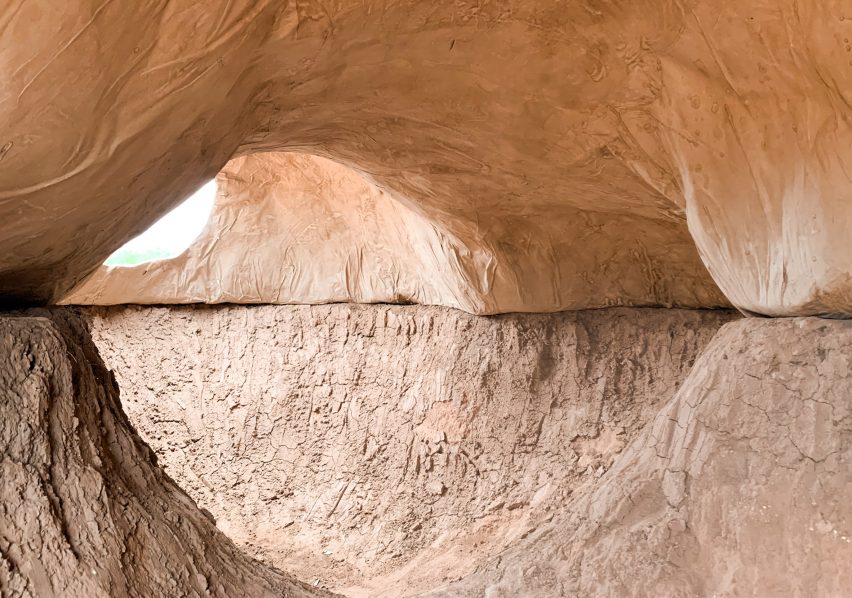
Papier-mache
Papier-mache is a composite material made of paper or pulp bound with adhesives. In 2020, design-build studio I/thee used it to create a prototype home named Agg Hab. The structure combines nearly 300 pounds of recycled paper with 200 litres of non-toxic glues that were handmade by the studio.
Openings in the surfaces of the dwelling introduce light and accentuate its glossy finish. It was designed by the studio as an example of an environmentally low-impact home and to offer occupants "a primordial experience".
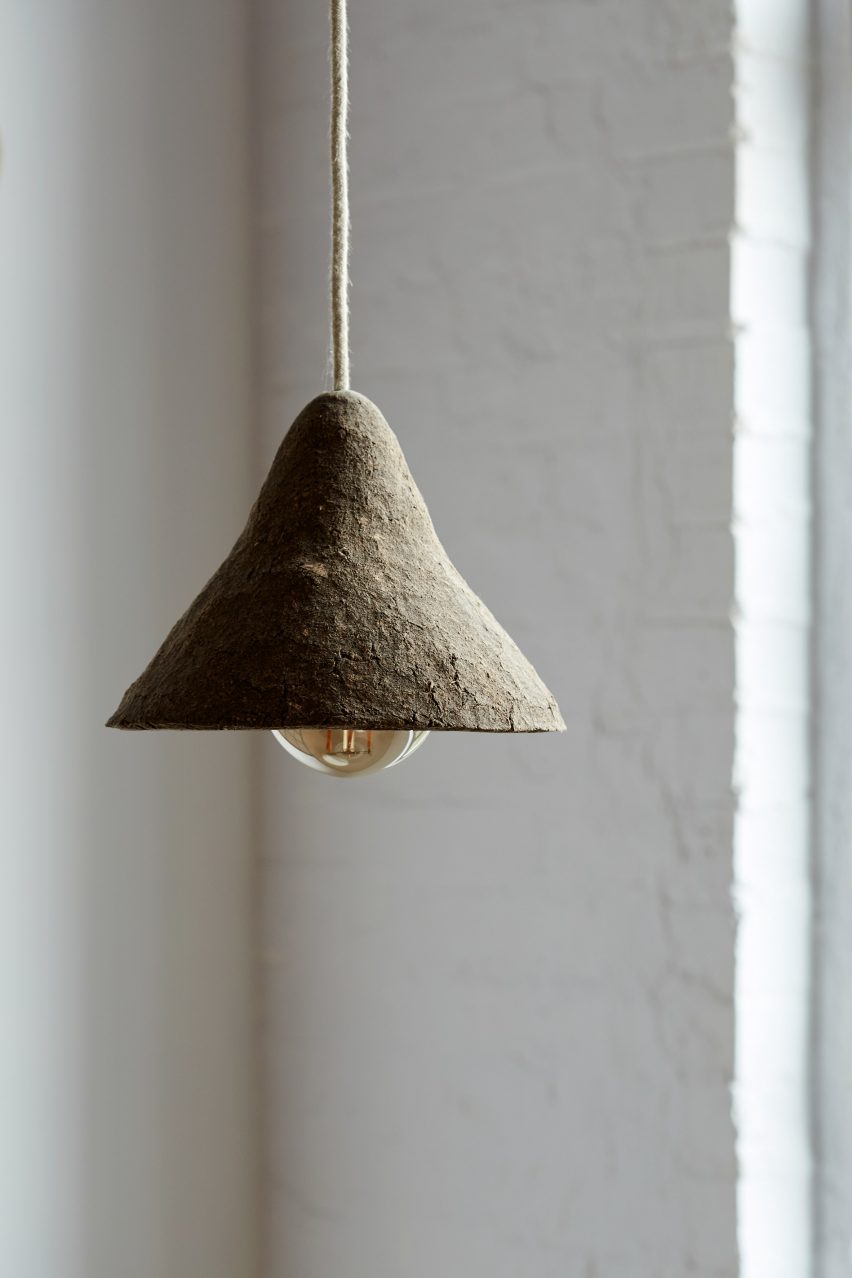
Mycelium
This pendant lamp is among several furnishings made from mycelium – the vegetative part of fungi – used to decorate the zero-waste restaurant Silo in London.
It was fitted out by Nina+Co to reflect the restaurant's sustainable ethos. Alongside the light shades, there are mycelium tables and pouffes, chosen as they are soft to touch, strong and biodegradable.
Mycelium is also able to sequester carbon and is cited by sustainability expert David Cheshire as "part of the solution" to creating carbon-negative buildings.
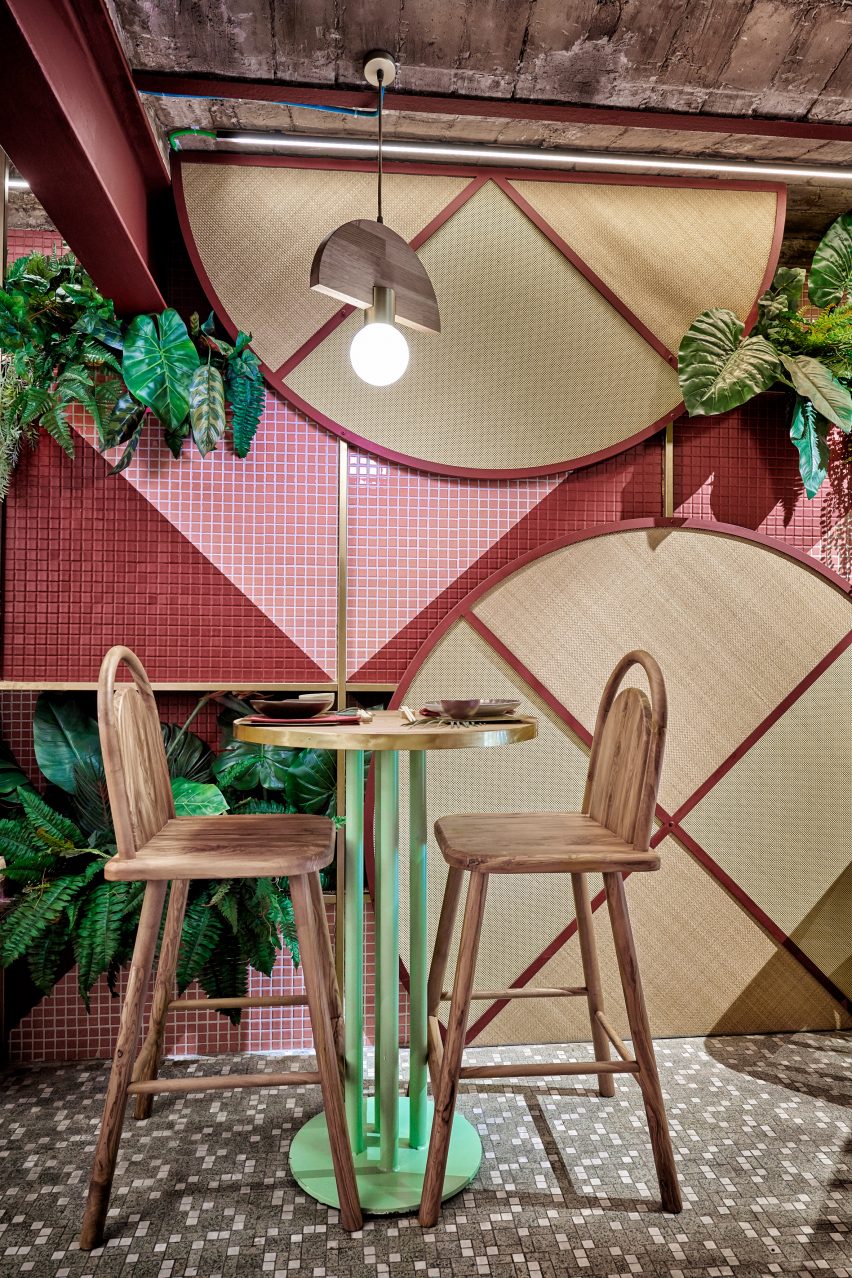
Raffia
The Kaikaya sushi restaurant in Valencia, Spain, features large circular panels of raffia across its walls, which Masquespacio designed as a nod to the hats worn by rice field workers in Japan.
Raffia is a durable, renewable and biodegradable fibre obtained from the raffia palm tree that is typically used to make woven textiles, baskets and hats. In this restaurant, it is teamed with wooden furniture, colourful tiles and cascading plants to offer a tropical aesthetic.
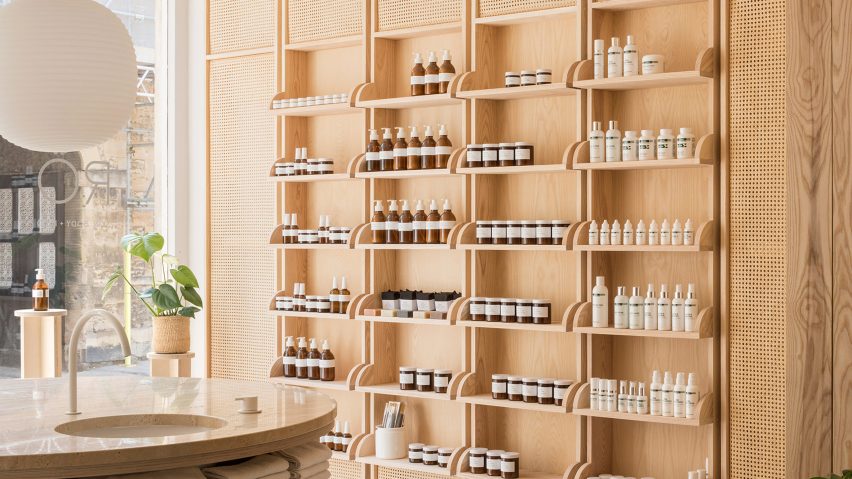
Cane
Cane is one of several natural materials used in the pared-back RÖ Skin store by O'Sullivan Skoufoglou Architects. It is sourced from the outer part of the naturally renewable rattan tree and is typically woven to create webbed patterns.
Here it has been mounted within an ash framework to create transparent display units and screens for treatment rooms, offering privacy while maintaining an open, light, earthy interior.
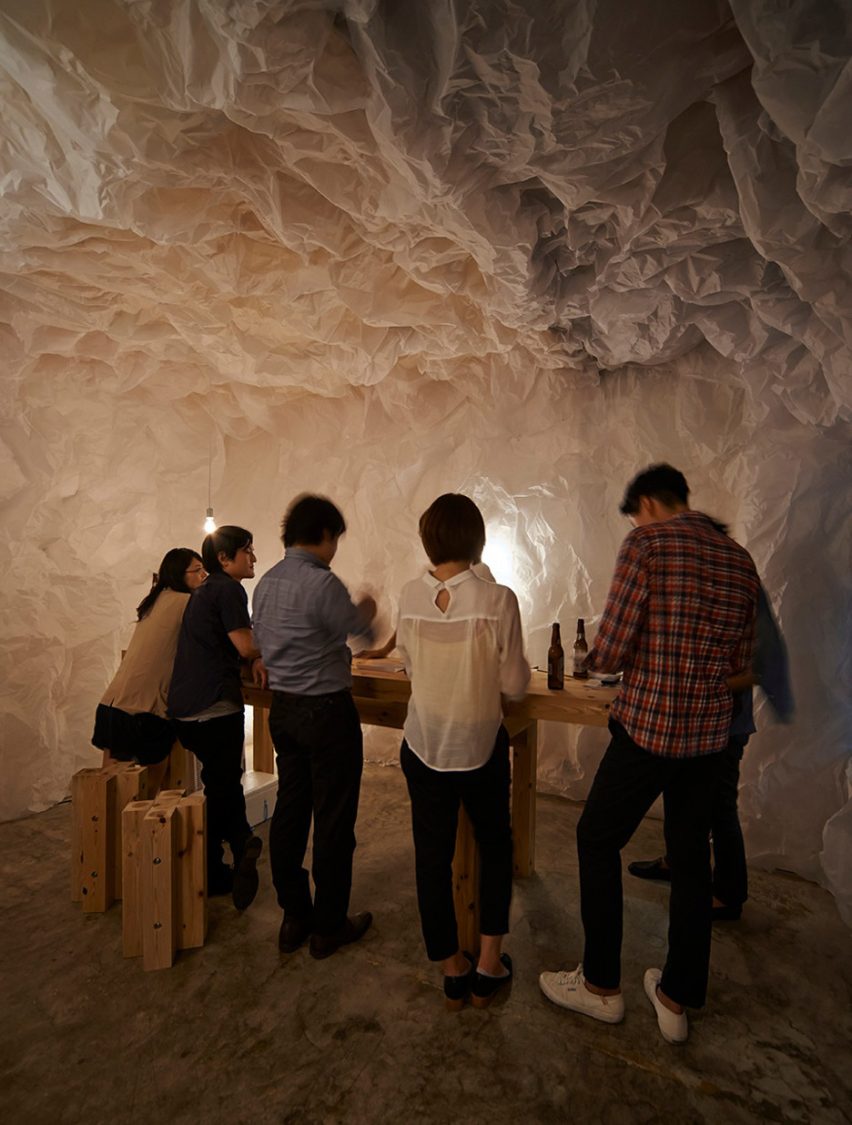
Paper
The cosy cave-like atmosphere of the pop-up Yorunoma bar in Japan was achieved by Naoya Matsumoto Design using swathes of crinkly tracing paper.
The paper was crumpled by the studio in collaboration with local residents, giving rise to a textured, rocky appearance. As the bar was created as a pop-up venue, the use of paper ensured the fit-out could be easily recycled after its closure.
Find out more about Yorunoma ›
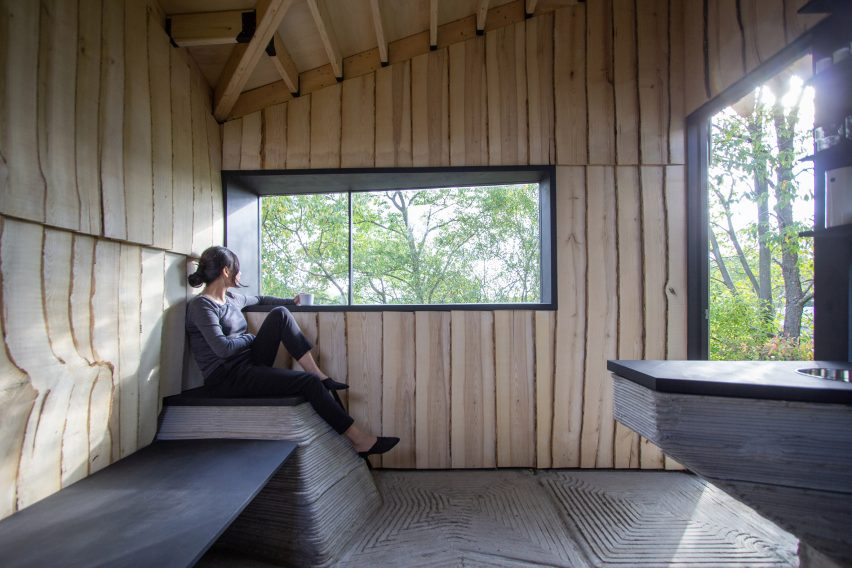
Wood
Wood is the most common biomaterial of all. There are hundreds of examples of how different types of timber have been used by architects and designers in our guide to wood.
In this example, US architecture studio Hannah used ash damaged by an invasive beetle to create elements of this tiny Ashen Cabin in Upstate New York. The aim was to demonstrate the potential of infested material that would usually be rejected.
"The advantage to using compromised ash for construction is that it both binds the carbon to the earth and offsets the harvesting of more commonly used wood species," the studio told Dezeen.
Find out more about Ashen Cabin ›
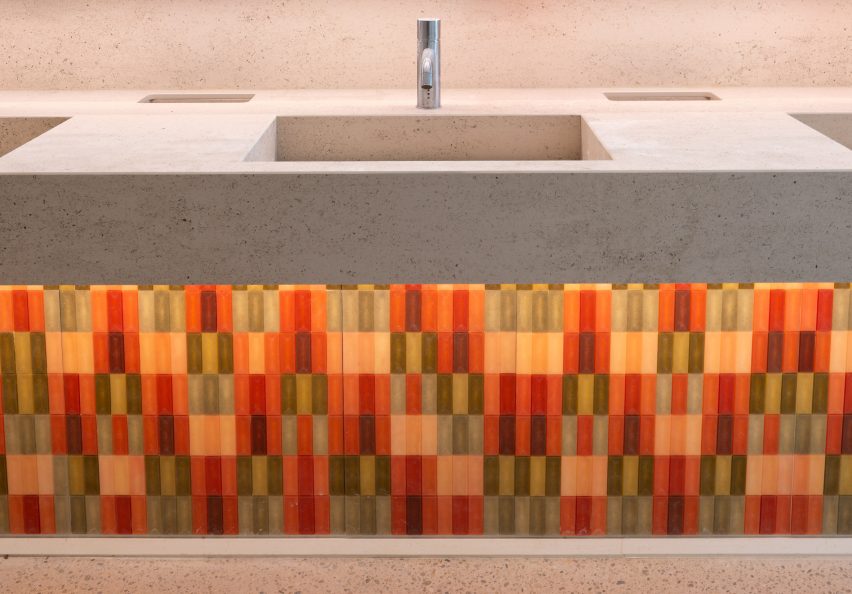
Algae
Thousands of injection-moulded algae tiles line the bathrooms in Frank Gehry's tower for Luma Foundation in Arles, France.
They were made by Atelier Luma in 20 colours by harvesting waterborne algae from salt flats in the nearby Camargue nature reserve. As algae consume and store CO2 as they grow, the tiles help lower the carbon footprint of the building's interior fit-out. The project also makes use of tiles made from salt and acoustic panels made from sunflowers.
Find out more about Atelier Luma's interiors ›
This is the latest in our series of lookbooks providing curated visual inspiration from Dezeen's image archive. For more inspiration see previous lookbooks showcasing L-shaped kitchens, calm living rooms and colourful kitchens.